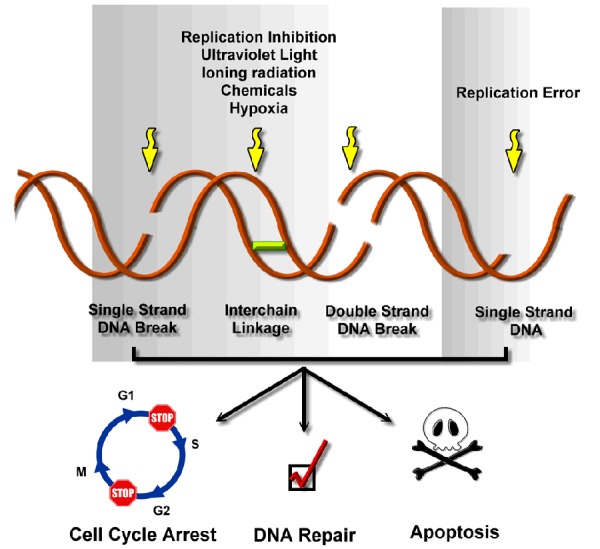Figure 1.

DNA damage reagents and DNA damage response. DNA is vulnerable to both exogenous and endogenous DNA damage reagents, including replication error, replication inhibition, ultraviolet (UV) light and cancer treatments such us irradiation therapy and chemotherapy. Exposure to these DNA damage reagents leads to DNA damage including DNA single-strand break (SSB), DNA interstrand cross-linking (ICL), DNA double-strand break (DSB) as well as single-strand DNA lesion (ssDNA). The DNA damage lesions then trigger the signal cascade which results in DDR primarily through delayed cell cycle from G1 to S phase (G1/S arrest) or from G2 to M phase (G2/M arrest) and as well as triggering DNA damage repair pathways. After successfully repaired, the cell cycle arrest is released and the cells will survive. However, the severe DNA damage adducts or DNA damage repair failure will eventually leads to apoptotic cell death.
